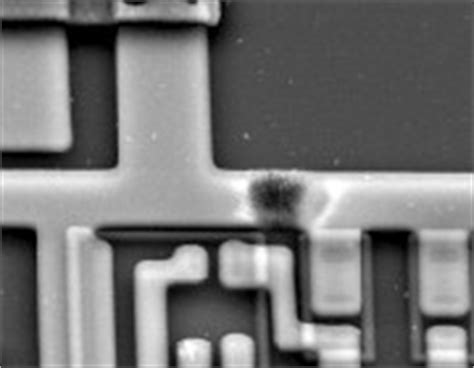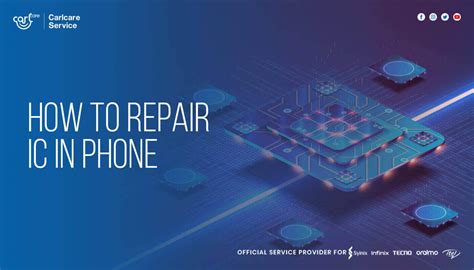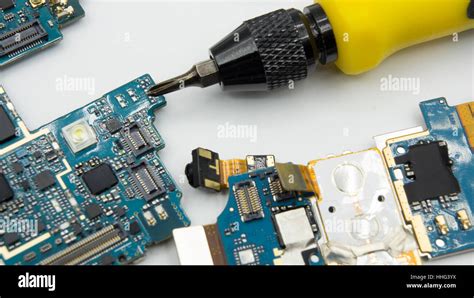Understanding Integrated Circuits (ICs) and Their Importance
An integrated circuit (IC) is a miniaturized electronic circuit that consists of numerous components such as transistors, resistors, capacitors, and diodes, all fabricated on a single semiconductor substrate. ICs have revolutionized the electronics industry by enabling the development of compact, efficient, and reliable electronic devices. They are found in a wide range of applications, from simple consumer electronics to complex industrial systems and aerospace technology.
Types of Integrated Circuits
There are several types of integrated circuits, each designed for specific purposes:
-
Analog ICs: These ICs process continuous signals and are used in applications such as amplifiers, voltage regulators, and sensors.
-
Digital ICs: These ICs process discrete signals (1s and 0s) and are used in digital logic circuits, microprocessors, and memory devices.
-
Mixed-signal ICs: These ICs combine both analog and digital circuits on a single chip and are used in applications such as data converters and communication systems.
The Role of ICs in Modern Electronics
ICs have become the backbone of modern electronics due to their numerous advantages:
-
Miniaturization: ICs allow for the integration of thousands or even millions of components on a single chip, reducing the size and weight of electronic devices.
-
Increased reliability: By minimizing the number of discrete components and interconnections, ICs reduce the chances of component failure and improve overall system reliability.
-
Enhanced performance: ICs enable faster signal processing, lower power consumption, and improved noise immunity compared to discrete component circuits.
-
Cost-effectiveness: Mass production of ICs has made them more affordable, enabling the widespread adoption of electronic devices in various industries.
Common Causes of IC damage
Despite their numerous benefits, integrated circuits are susceptible to various types of damage that can affect their performance or render them non-functional. Some common causes of IC damage include:
Electrostatic Discharge (ESD)
Electrostatic discharge (ESD) is a sudden flow of electricity between two electrically charged objects. ICs are particularly sensitive to ESD, as the high voltage and current associated with an ESD event can damage the delicate internal components of the chip.
ESD can occur due to various reasons:
-
Human body model (HBM): This occurs when a charged person touches an IC, causing a discharge through the chip.
-
Machine model (MM): This happens when a charged machine or tool comes in contact with an IC.
-
Charged device model (CDM): This occurs when an IC itself becomes charged and discharges to a grounded surface.
To prevent ESD damage, it is essential to implement proper ESD protection measures, such as:
- Using ESD-safe packaging materials and handling procedures
- Wearing ESD-safe clothing and using grounded wrist straps when handling ICs
- Maintaining a static-free work environment
Overcurrent and Overvoltage
ICs are designed to operate within specific current and voltage ranges. Exposing them to excessive current or voltage can cause permanent damage to the internal components.
Overcurrent can occur due to:
-
Short circuits: When a low-resistance path forms between the power supply and ground, leading to a high current flow through the IC.
-
Incorrect power supply connections: Connecting the IC to a power supply with a higher voltage than its maximum rating can cause overcurrent.
Overvoltage can happen when:
-
Power supply fluctuations: Sudden spikes or surges in the power supply voltage can exceed the IC’s maximum voltage rating.
-
Incorrect power supply connections: Connecting the IC to a power supply with a higher voltage than its maximum rating can cause overvoltage.
To prevent overcurrent and overvoltage damage, it is crucial to:
- Use current-limiting resistors and fuses in series with the IC
- Ensure proper power supply connections and regulation
- Implement overvoltage protection circuits, such as transient voltage suppressors (TVS) or Zener diodes
Thermal Stress
ICs generate heat during operation due to the power dissipation of the internal components. Excessive heat can cause thermal stress, leading to performance degradation or permanent damage.
Thermal stress can occur due to:
-
Inadequate heat dissipation: Poor thermal management, such as insufficient heatsinking or airflow, can cause the IC to overheat.
-
High ambient temperatures: Operating the IC in environments with high ambient temperatures can exacerbate the heat generation and dissipation challenges.
-
Power overload: Drawing excessive current through the IC can lead to increased power dissipation and heat generation.
To mitigate thermal stress, it is important to:
- Use appropriate heatsinks and thermal management techniques
- Ensure adequate airflow and ventilation around the IC
- Operate the IC within its specified power and temperature ratings
Mechanical Damage
ICs are delicate components that can be damaged by mechanical stress, such as shock, vibration, or physical impact.
Mechanical damage can occur due to:
-
Improper handling: Dropping or mishandling the IC during assembly or transportation can cause internal damage or lead to broken pins.
-
PCB flexing: Excessive bending or flexing of the printed circuit board (PCB) on which the IC is mounted can cause mechanical stress on the chip.
-
Inadequate mounting: Poor soldering or insufficient mechanical support can lead to the IC becoming loose or detached from the PCB.
To prevent mechanical damage, it is essential to:
- Handle ICs with care, using proper tools and techniques
- Design PCBs with appropriate mechanical support and strain relief
- Use robust packaging and transportation methods

Symptoms and Effects of IC Damage
When an IC is damaged, it can exhibit various symptoms and effects that impact the performance and functionality of the electronic device. Some common symptoms and effects of IC damage include:
Partial or Complete Malfunction
Depending on the extent and nature of the damage, an IC may experience partial or complete malfunction. Partial malfunction can manifest as:
-
Degraded performance: The IC may still function, but with reduced accuracy, speed, or efficiency.
-
Intermittent operation: The IC may work inconsistently, experiencing random failures or glitches.
Complete malfunction occurs when the IC stops functioning altogether, leading to a non-operational device.
Increased Power Consumption
Damaged ICs may draw excessive current, leading to increased power consumption. This can be caused by:
-
Short circuits: Internal short circuits can create low-resistance paths, causing high current flow and power dissipation.
-
Leakage currents: Damage to the IC’s insulation or passivation layers can result in increased leakage currents, contributing to higher power consumption.
Increased power consumption can lead to reduced battery life in portable devices, overheating, and potential damage to other components.
Erratic or Unexpected Behavior
A damaged IC may exhibit erratic or unexpected behavior, such as:
-
Incorrect output: The IC may generate incorrect or inconsistent output signals, leading to faulty data processing or control.
-
Unintended activation: The IC may trigger unintended functions or activate at inappropriate times.
-
Noise or interference: Damaged ICs can introduce noise or interference into the system, affecting the performance of other components.
Erratic behavior can be difficult to diagnose and may require extensive testing and troubleshooting to identify the root cause.
Physical Damage
In some cases, IC damage may be visible through physical inspection. Common signs of physical damage include:
-
Cracks or fractures: Impact or mechanical stress can cause cracks or fractures in the IC package or die.
-
Burn marks: Overcurrent or overvoltage events can leave visible burn marks on the IC package or surrounding components.
-
Deformed or broken pins: Mishandling or improper insertion can result in bent, deformed, or broken pins on the IC package.
Physical damage is often irreversible and requires the replacement of the affected IC.

Troubleshooting and Repairing Damaged ICs
When an IC is suspected to be damaged, troubleshooting and repair efforts can be undertaken to identify the problem and potentially restore functionality. However, it is important to note that in many cases, damaged ICs may need to be replaced entirely.
Visual Inspection
The first step in troubleshooting a damaged IC is to perform a visual inspection. This involves:
-
Checking for physical damage: Look for cracks, fractures, burn marks, or deformed pins on the IC package.
-
Inspecting solder joints: Check the solder joints connecting the IC to the PCB for any signs of damage, corrosion, or poor connection.
-
Examining surrounding components: Look for any damage or anomalies in the components and traces near the IC.
Visual inspection can help identify obvious signs of damage and guide further troubleshooting efforts.
Continuity and Resistance Tests
Continuity and resistance tests can be performed using a multimeter to check for short circuits, open circuits, or abnormal resistance values within the IC.
-
Continuity test: This test checks for the presence of a conductive path between two points. It can help identify short circuits or open circuits within the IC or its connections.
-
Resistance test: This test measures the resistance between two points. Abnormal resistance values can indicate damage to the IC’s internal components or connections.
These tests can provide valuable information about the IC’s internal state and help pinpoint the location of the damage.
Functional Testing
Functional testing involves subjecting the IC to its intended operating conditions and evaluating its performance. This can be done using specialized test equipment or by incorporating the IC into a test circuit.
-
Bench testing: This involves testing the IC on a test bench using signal generators, oscilloscopes, and other test equipment to assess its functionality.
-
In-circuit testing: This involves testing the IC while it is installed in the actual circuit, allowing for the evaluation of its performance under real-world conditions.
Functional testing can help identify performance issues, erratic behavior, or complete malfunction of the IC.
Replacement
In many cases, particularly with severe damage, the most practical solution is to replace the damaged IC with a new one. When replacing an IC:
-
Ensure compatibility: Select a replacement IC that is compatible with the original in terms of package type, pin configuration, and functionality.
-
Use proper tools and techniques: Use appropriate soldering tools and follow best practices for IC removal and installation to avoid further damage.
-
Verify functionality: After replacing the IC, perform thorough testing to ensure that the device functions as intended.
Replacing a damaged IC can be a cost-effective and time-efficient solution, especially when troubleshooting and repair efforts prove challenging or unsuccessful.

Prevention and Best Practices
Preventing IC damage is crucial to ensure the reliability and longevity of electronic devices. Some best practices to minimize the risk of IC damage include:
-
Proper handling: Always handle ICs with care, using ESD-safe tools and procedures. Avoid touching the pins or exposed surfaces of the IC.
-
ESD protection: Implement ESD protection measures, such as grounded workstations, ESD-safe packaging, and personal grounding equipment.
-
Correct power supply: Ensure that the IC is powered with the correct voltage and current levels, as specified in its datasheet. Use voltage regulators and current-limiting devices where necessary.
-
Thermal management: Provide adequate heat dissipation through proper PCB design, heatsinking, and airflow management. Operate ICs within their specified temperature ranges.
-
Mechanical protection: Design PCBs with appropriate mechanical support and strain relief for ICs. Use robust packaging and transportation methods to minimize mechanical stress.
-
Quality control: Implement strict quality control measures during the manufacturing and assembly processes to identify and rectify potential issues before they lead to IC damage.
-
Regular maintenance: Perform regular inspections and maintenance of electronic devices to identify and address any signs of IC degradation or damage promptly.
By following these best practices and taking a proactive approach to IC protection, designers and manufacturers can significantly reduce the occurrence of IC damage and ensure the optimal performance and reliability of electronic devices.
Frequently Asked Questions (FAQ)
-
What are the most common causes of IC damage?
The most common causes of IC damage include electrostatic discharge (ESD), overcurrent, overvoltage, thermal stress, and mechanical damage. -
Can a damaged IC be repaired?
In some cases, a damaged IC can be repaired through troubleshooting and targeted interventions. However, in many instances, particularly with severe damage, the most practical solution is to replace the damaged IC with a new one. -
How can I protect my ICs from ESD damage?
To protect ICs from ESD damage, use ESD-safe handling procedures, wear ESD-safe clothing and grounding equipment, and maintain a static-free work environment. Additionally, ensure proper storage and transportation of ICs using ESD-safe packaging materials. -
What are the symptoms of a damaged IC?
Symptoms of a damaged IC can include partial or complete malfunction, increased power consumption, erratic or unexpected behavior, and visible physical damage such as cracks, burn marks, or deformed pins. -
How can I prevent IC damage in my electronic devices?
To prevent IC damage, follow best practices such as proper handling, ESD protection, correct power supply, adequate thermal management, mechanical protection, quality control, and regular maintenance. By taking a proactive approach to IC protection, you can minimize the risk of damage and ensure the optimal performance and reliability of your electronic devices.
| Cause of Damage | Prevention Measures |
|---|---|
| ESD | Use ESD-safe handling procedures, clothing, and grounding equipment |
| Overcurrent | Use current-limiting resistors, fuses, and proper power supply regulation |
| Overvoltage | Implement overvoltage protection circuits and ensure proper power supply |
| Thermal Stress | Provide adequate heat dissipation, airflow, and operate within ratings |
| Mechanical Damage | Handle ICs with care, use proper PCB design and packaging |
In conclusion, understanding the causes, symptoms, and effects of IC damage is essential for designers, manufacturers, and users of electronic devices. By implementing appropriate prevention measures and following best practices, the risk of IC damage can be significantly reduced, ensuring the reliability and longevity of electronic systems. Regular inspection, maintenance, and prompt action in case of suspected damage can help minimize the impact of IC failures and maintain the optimal performance of electronic devices.
